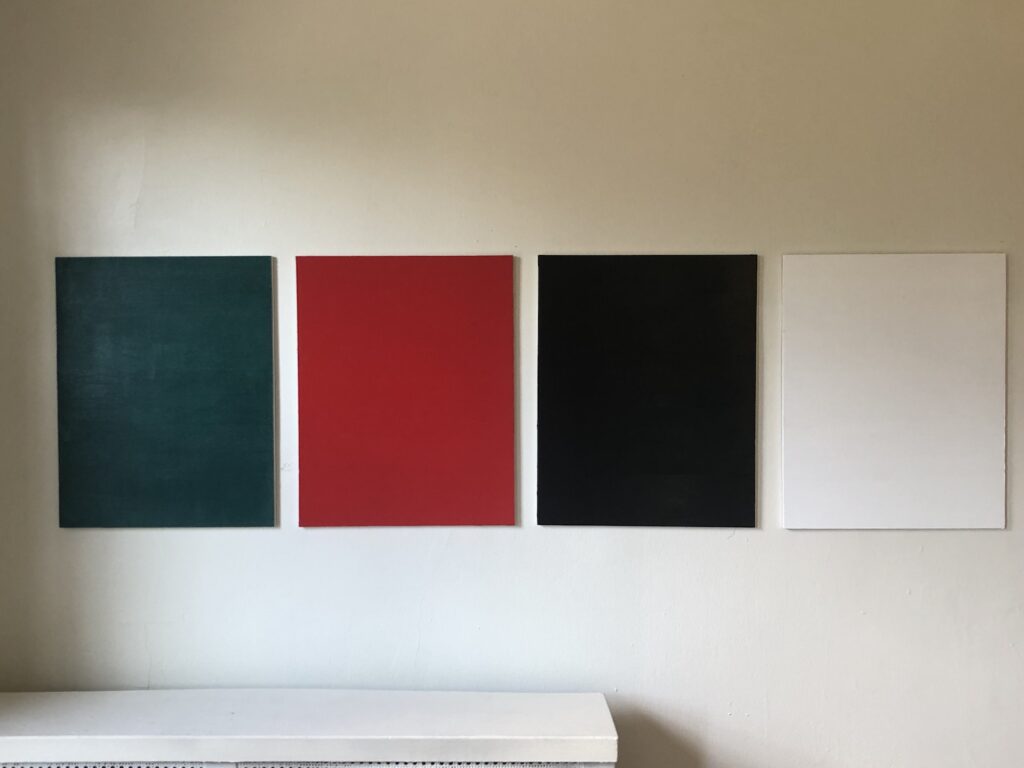
Gonzalez-Torres Forbidden Colors, May 2021

the making of, by greg allen


We really are not in a good spot as a country right now, but at least we know more about the bad spot we’ve been in for a while.
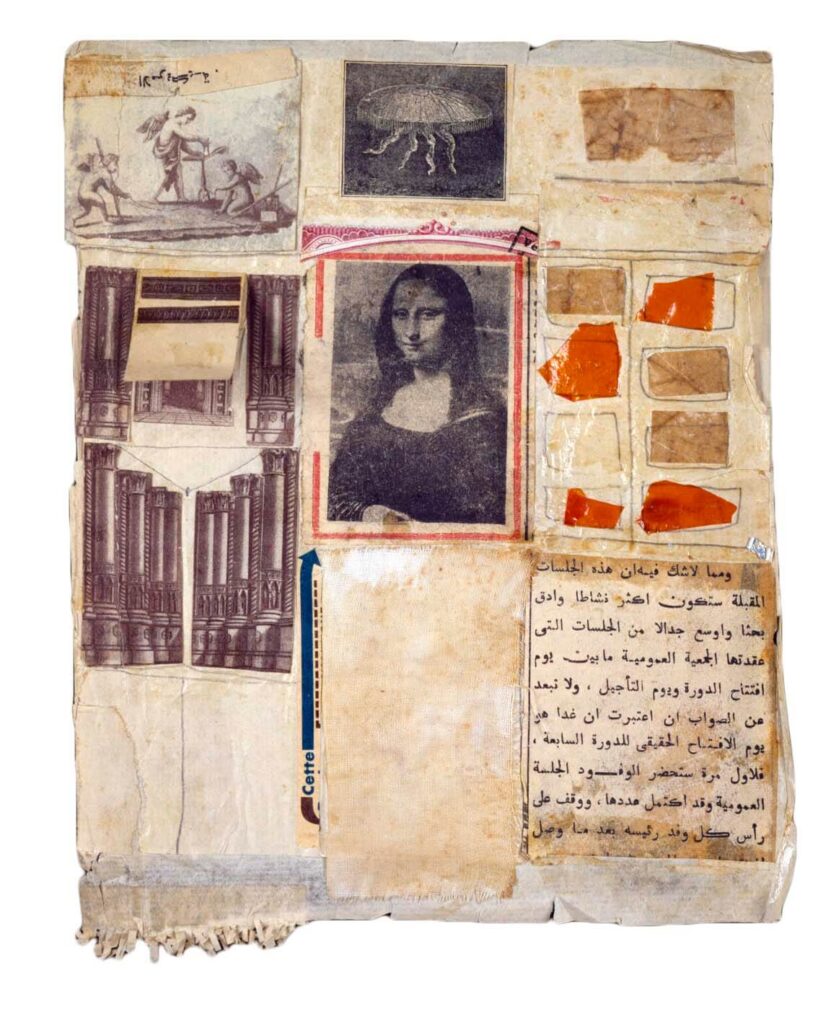
Via tumblr user @poloniumtherapy comes this most Combine-ish Rauschenberg collage to predate the Combines, now titled Untitled (Mona Lisa), from 1952. It belongs to a series, North African Collages, which Rauschenberg made during his work and travel through Morocco with Cy Twombly. Most were made on shirtboards; though the size fits, this collage is on paper, not paperboard. It is not one of the 28 collages remade as enlarged facsimile prints in 1991 under the title, Shirtboards—Italy/Morocco. The Rauschenberg Foundation says 38 of these collages are known to exist. [Plus one known to be missing; in 2015 I wondered if it was underneath an early Johns.]
The putti with the surveying equipment are European. The moon jellyfish engraving is French. The gothic columns are European, and the Mona Lisa is the Mona Lisa. The strongest link to North Africa here, at least aesthetically, is the page of Arabic text collaged on the lower right corner. Its source is unidentified, but it talks about the “General Assembly” and how “tomorrow is the real opening day of the Seventh Session.” Assuming that’s the United Nations, the Seventh Session was the first one held in the UN’s new headquarters in New York. It opened on October 14, 1952, right around the time Rauschenberg and Twombly arrived in Casablanca.
Craig Starr apparently included Untitled (Mona Lisa) in a show called “Souvenirs: Cornell Duchamp Johns Rauschenberg.” But since it ran from October 2020 through March 2021, I can only take his word on it. It’s a great grouping, though. Cornell, of course, helped Duchamp fabricate the Series B of his Boîte-en-Valise, which, of course, included a Mona Lisa.
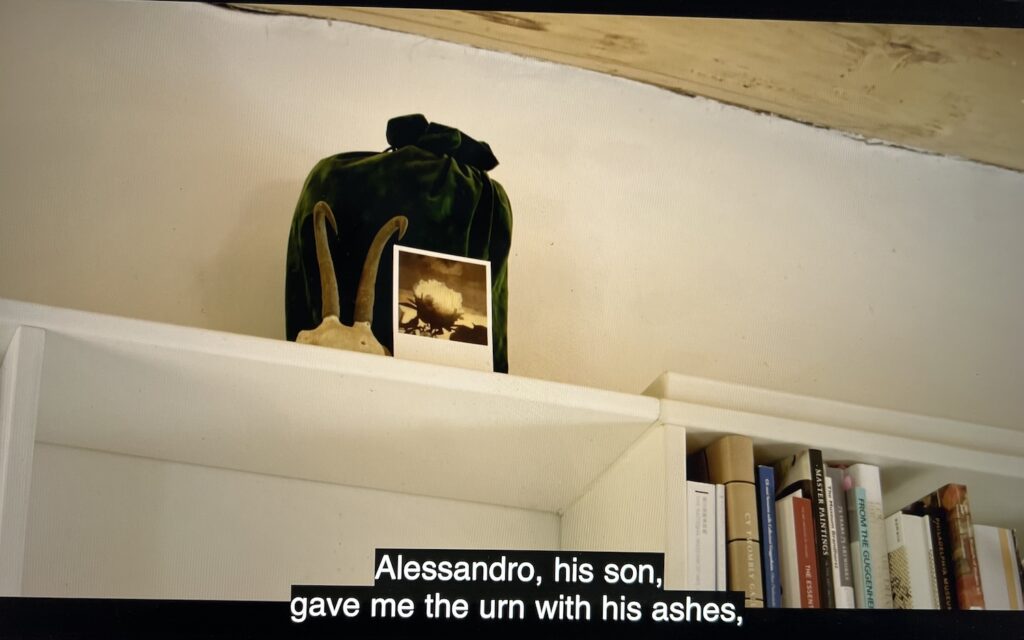
Cy Dear was a saddening revelation. The 2018 documentary by Andrea Bettinetti tells a story of Cy Twombly’s life, but its subject is actually Nicola Del Roscio, Twombly’s longtime partner who has spent his life enabling the artist’s work, and managing his legacy. In the process Del Roscio’s own sadness and grief seem to have gone untended, and now loom over the landscape he’s so fastidiously cultivated. I’ll need more time to process Cy Dear and the implications of Twombly’s life on his work and the people around him.
But one thing that finally makes some sense is Twombly’s photographs. Not how their copyrights have all been assigned to the Nicola Del Roscio Foundation. That always struck me as a natural gesture: the Polaroids Twombly made throughout his decades of days were left to the person he spent all those days with. What I could never figure out is what they were, and how he made them.
Continue reading “Makin’ Copies: Cy Twombly Photos”It is sort of mind-blowing to realize the digital shitstorm that has engulfed Christie’s the week before some of the year’s biggest auctions. I mean, I certainly didn’t need to hear from Todd Levin to know that the website had gone offline.
But it was only by clicking through the email sent from CEO Guillaume Cerutti that the scope of their predicament began to sink in. That email was, at least sent from the Christie’s email server.
Continue reading “We Are All Christies-Now”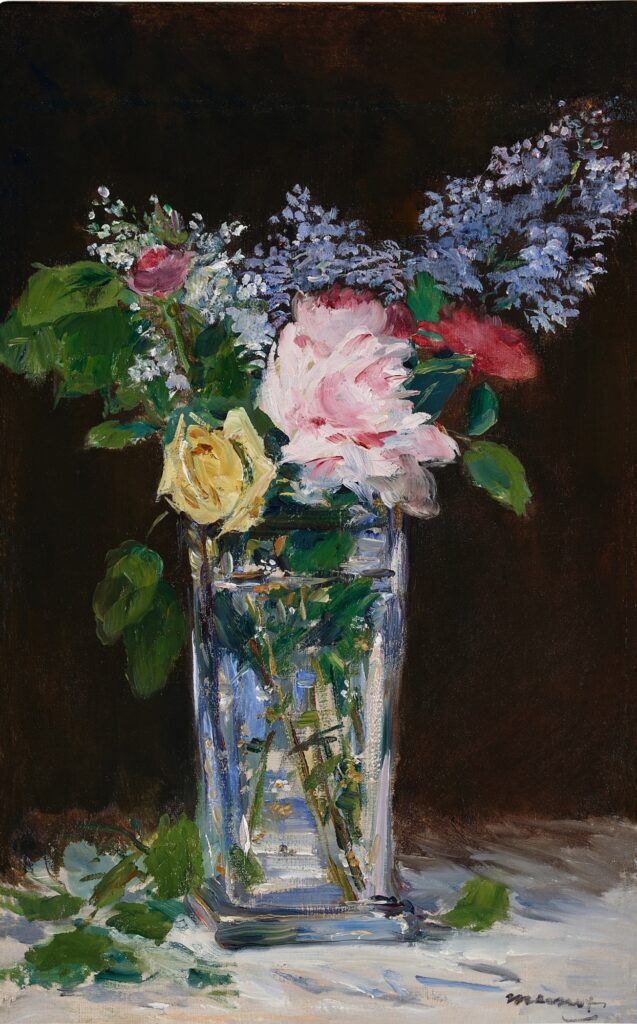
I wish I knew how to quit you, Manet Facsimile Objects.
I thought they were done, products of the moment, the moment when we couldn’t travel, or shouldn’t, when the museums were closed, and when full-scale facsimile objects would serve as proxies, simulating the experience of being in the presence of the artwork.

[They also each include a standing offer to exchange the original work for a certificated Facsimile Object, a liberatory gesture to help you, the new owner, to focus on yourself and your experience, and not worry for a minute over the work’s condition, state, or worth. I’m ready to exchange whenever you are; hmu.]
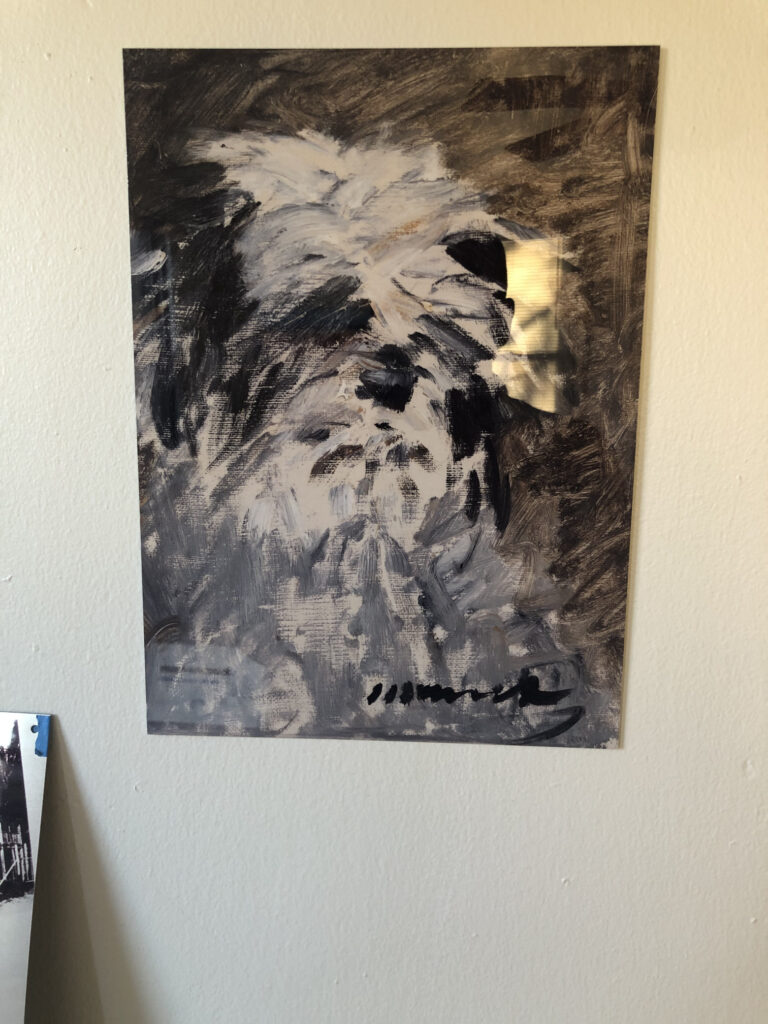
But now, in the midst of [gestures around to the city and the world] all this, the call has come forth, and it is impossible—for me, at least—to heed it. Andrew Russeth’s effusive invitation to visit Manet’s rapturous late still life, Vase de fleurs, roses et lilas (1882), at Sotheby’s in New York, where it is on view only until it is sold on May 15th.

As Andrew notes, this is the only sure window of time in which to see this rare painting, which has only been exhibited three times in 50+ years. Of course, all three of those times were in 2018-2020, a generous gesture on the part of the unidentified seller. It is not at all known what the next owner will do, so we must strike while we can, and get to Sotheby’s if you can.
Édouard Manet Facsimile Object (M4) is for those who cannot, and also for those who will not buy the painting next week. Well, not everyone. If you have the means to buy this Manet and don’t, I really suggest you sit this Facsimile Object out.
There is an irrevocable bid, so the Manet will sell to someone, but if you’re thinking that no, anything beyond the $7-10 million estimate is irrational, and you, with your financial savvy, elect not to pay, do not get the ÉMFO (M4). If you think it will stand as a trophy to your sophisticated investorial victory while honoring your connoisseurship, LMAO no it won’t. If you have the means and still somehow decide not to buy this painting, I fear Facsimile Object will offer you cold comfort in your folly and a sober reckoning of your failure. Every time you look at its high-gloss aluminum finish, you’ll see yourself looking, and remember that you could have bought the Manet instead, and you didn’t. You’ll get a Facsimile Object from me—and a handmade Certificate of Authenticity—but you won’t have my sympathy. I can’t even promise you’ll get my pity.
If you actually take a run at it and lose, OTOH, I hope you have pre-ordered the Facsimile Object as FOMO insurance; because if you wait til the auction is over, it will be too late, and your regret will be doubled. For you, dear underbidder, my heart would ache, but the concept is inviolate. And of course, for the winner, a Facsimile Object is always set aside, and a trade is always on the table. Straight across, with the COA thrown in to sweeten the deal.
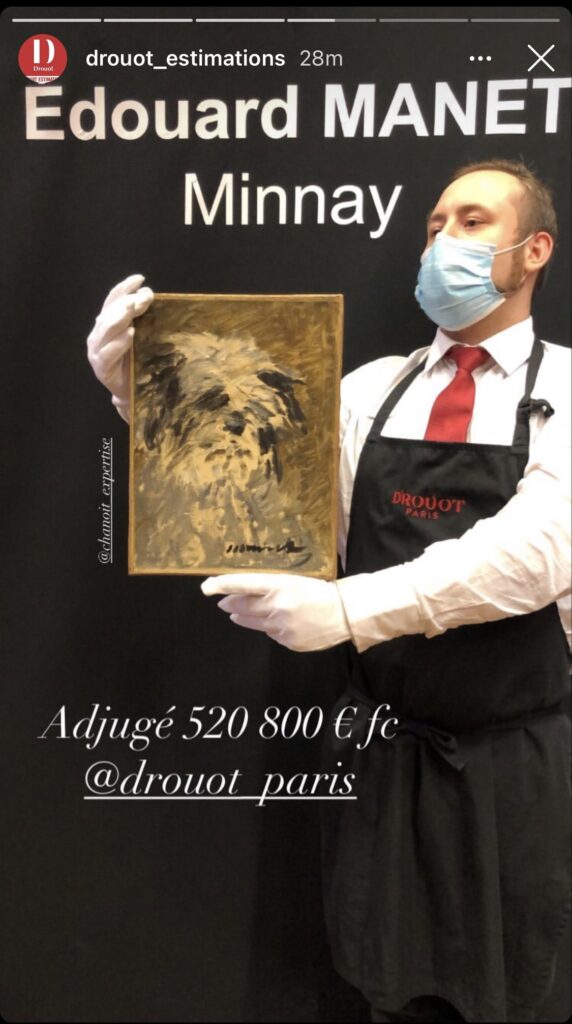
Andrew calls this a “small picture,” but honestly, at 22×14 inches, it’s a large Facsimile Object, almost 4x the size of the previous ones. One unexpected thing about Minnay [and all subsequent FOs] was how tactile they are, how nice it feels to hold them. Until this week, I would have compared it to a luxuriously thin iPad. But whether in your hands, on a shelf, or on a wall, this will be a substantial presence, and it is, admittedly, daunting to think about.
In fact, this whole thing feels like folly. But maybe it’s just the folly we need in these darkening times, the folly of flowers, friendly gestures of fleeting beauty, which also give us a glimpse of ourselves.
Order Édouard Manet Facsimile Object (M4) “Fleurs”, with signed, stamped & numbered COA, before the Manet sells on 15 May 2024 around 8PM EST.
[15 May update: I will be offline during the sale, but to preserve the conceptual nature of the project, orders will only be accepted which arrive before the Manet lot hammers down. Thank you for your engagement.
OK, that was that, $8.5 million hammer, sorry Beijing underbidder, you may not get a Facsimile Object to assuage your loss.]
Previously, related: Édouard Manet Facsimile Object (M1) “Minnay”;
Édouard Manet Facsimile Objects (M2) “Bob” & (M3) “Souki”

So on my journey from WTF to “Yes, please!” on the Felix Gonzalez-Torres “Free Tibet” rug edition that was later declared to be non-work, I passed the following:
It’s not just that Equator Production was using weavers and non-profits associated with the Tibetan diaspora in India to make their carpets. 1991 was also officially, The Year of Tibet.
And 1988 was the year of Tiger Rugs of Tibet having a breakout show at the Hayward Gallery in London, so the specific Tibetan Buddhist tradition of tiger-motif prayer rugs and monastery rugs had been launched in the West. Even if Felix didn’t see the Hayward show, there was a lush catalogue. In 1991 ABC Carpet in New York had a Year of Tibetan Tiger Rug collection. So it was around.

What is not around is the Nepal Tiger Crewneck Sweater which Japanese heritage denim brand Kapital dropped in F/W 2019. But it still replaced every idea I had about repeating Felix’s Free Tibet carpet with a vision of these:
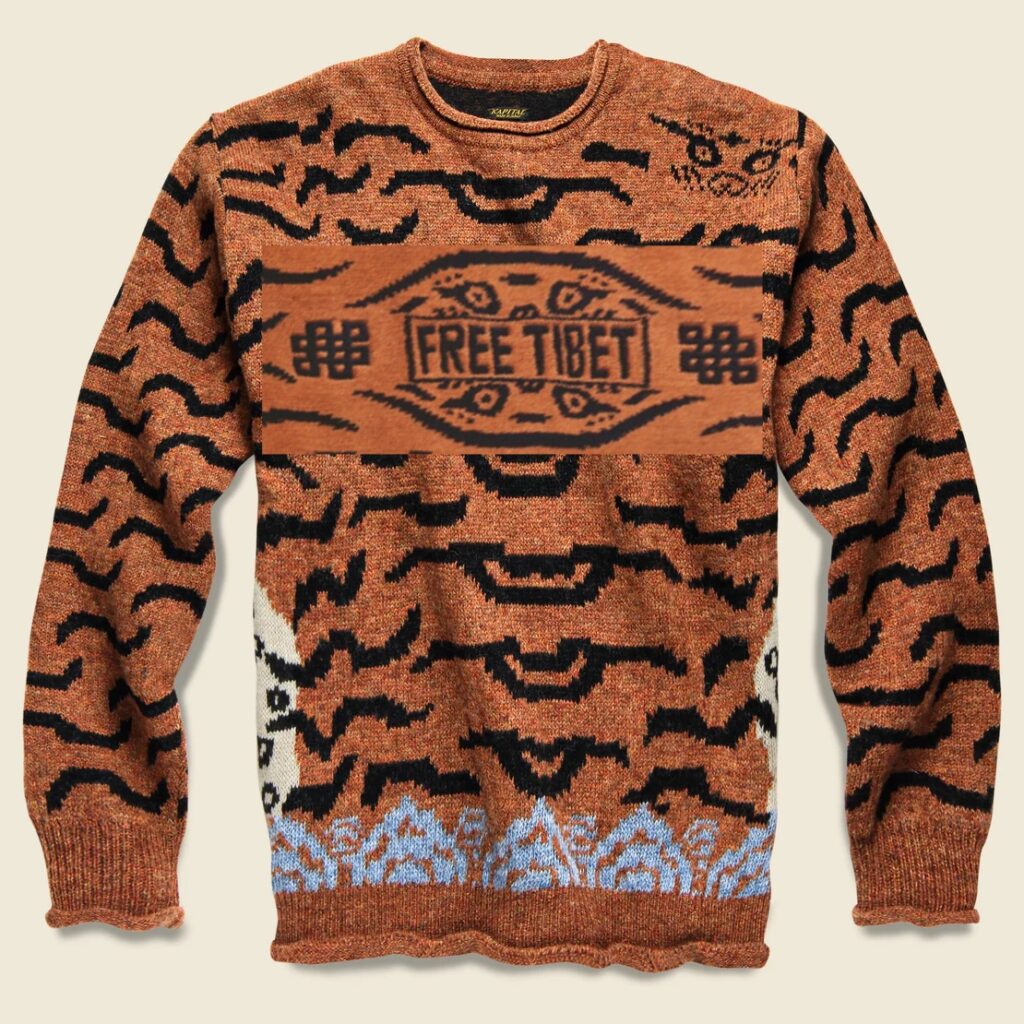
Whatever the edition, one will be set aside for the reincarnation of Sturtevant.
Previously: That Felix Gonzalez-Torres Carpet
In the Nota Bene boys’ rocking conversation with Antwaun Sargent, they discuss Gagosian’s ability to present work by younger Black artists in the context of their white elders who are also represented by the gallery.
On L.A. artists Lauren Halsey and Ed Ruscha: “You wouldn’t necessarily think of those two artists together until you sort of—’There’s an Ed in the booth and a Lauren in the booth’—and I use a booth because that’s where all of our artists often meet.”
“…Those are the sorts of things that become really interesting to me, where the collector has the Lauren and the Ed, or the Rick [Lowe] and the Brice [Marden],” Sargent continues, “…and they might send a picture and show it installed, and you can send that to the artist, and you can have that moment.”
I think I flagged these two mentions from an hour-plus insightful discussion because they recognize two sites of art interaction—a fair, a collector’s home—that typically don’t get consideration, at least in public discourse. One of Antwaun’s superpowers is his sensitivity to an artist’s experience, and that artworks travel to places that artists often do not.
Katya Kazakina reports on the market for Sterling Ruby’s artwork, how one series, his spray paintings, being more popular than anything else kind of force fed the market for the rest, and how his galleryhopping left collectors stuck with mid stuff they’d only bought to get the big one. But even when one comes up, it’s still the size that is a problem:
Ruby’s paintings are very large. Let’s face it, most collectors are not like Rosa de la Cruz, who bought SP113 from the Pace gallery in 2010 for $155,000 knowing that her specially built Miami space could accommodate it (and plenty of other massive works). It’s more than 10 feet tall and 15 feet wide.
“It’s so large that it’s going to be a limiting factor,” Levin said of the work. “There’s no way this painting will fit into most apartment buildings.” Christie’s pre-sale estimates, $250,000 to $350,000, reflect this limitation, he added.

I was going to suggest a few collectors go in together and buy Rosa’s Ruby. But I have never been able to get excited about Ruby’s work, even if it was to chop it up. So just let it all go the way of the bullshit private museum bubble they were made for.
The rapture of this lot essay [christies]
Sterling Ruby’s New Paintings Sold for $550,000 Each at Frieze New York. Are They Worth That? [artnet]
Previously, related but better: A Domestic Proposal: At Home With Voice of Fire
Chop Shop, 2016
This one’s clearly on me. If I was going to write anything about the John Galliano documentary, I should have known to read more Rachel Tashjian-Wise than just Opulent Tips.
She reported on the documentary almost two months ago, and Macdonald told her the same fascinating-to-me thing he told Josh Slater-Williams, that Galliano’s Fall 2022 show was about being the subject of a documentary. Which, if you look at that show, is all kinds of problematic. But.
She also adds so much more context: that it was Anna Wintour who dangled a Galliano documentary on the hook for several years until a director—Macdonald—bit. And crucially, as I read it, that the whole thing pivoted on documentary’s backers at Dior—and LVMH.
The reputation being laundered by the documentary is not Galliano’s—or not just Galliano’s—but Galliano’s collections for Dior. So cooperating effusively was, Macdonald suggested, “a great way for them to say, ‘Okay, we’ve laid that to rest.’ And I think, so, for Dior and for John, I think that was their agenda.”
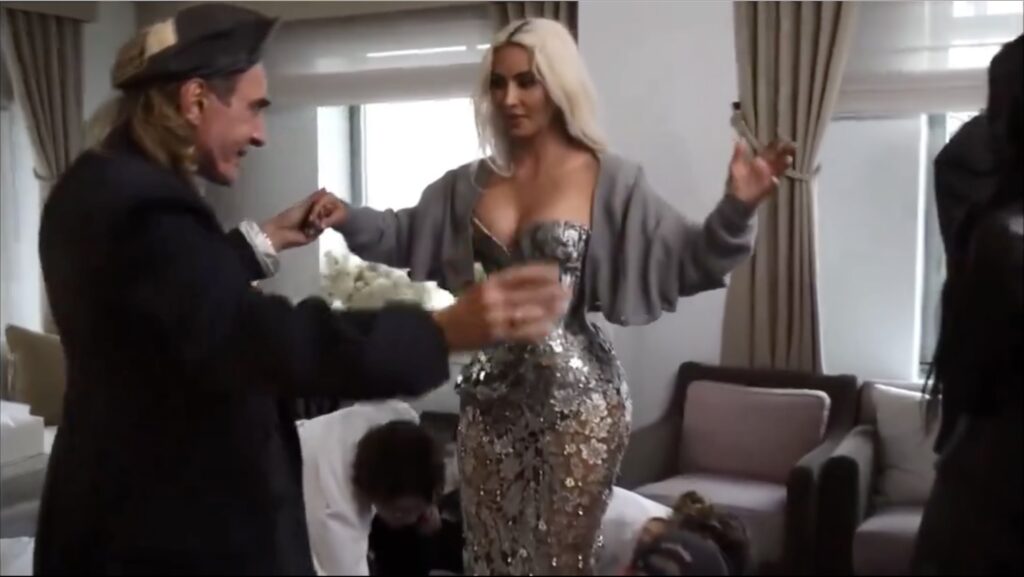
“It is also, of course,” wrote Tashjian-Wise, “an agenda that allows them to make more money off Galliano-designed products.” And so it seems unsurprising that weeks after the documentary dropped, Galliano was declared “the real winner of the Met Gala.” Tashjian-Wise notes that Galliano dressed six celebrities for the Met Gala, including Kim Kardashian, and Zendaya—twice. The actress skipped the co-chairs receiving line at the top of the Met’s stairs to take a second lap outside, wearing a vintage Galliano-era Givenchy.
Both Tashjian-Wise and Chantal Fernandez at The Cut reported rumors that Galliano had been Anna Wintour’s and curator Andrew Bolton’s intended subject this year’s Costume Institute exhibition. After someone at the Met nixed the plan last year, Bolton had to throw together a collection exhibition about spring florals based on a dystopian Philip K. Dick story.
A Wintour-orchestrated, LVMH-sanctioned documentary. A triumphant LVMH-sponsored museum retrospective, and reported “suggestions” that Galliano would return to LVMH. The plan really was going to be, put the antisemitic outrage outrage to rest, and use the Met Gala to launch a rebooted Galliano. The world—and some museum trustees, apparently—have intervened, but it does cast a stark light on the Met Gala as a wholly instrumentalized tool of the luxury industry.
Fernandez’ article on Andrew Bolton gets into the Costume Institute’s weird governance and curatorial shenanigans, but we’ve never gotten a breakdown of the Met Gala’s actual value proposition as the the world’s most extravagant sponcon. It’s a Condé Nast-branded, pay-to-play fashion show, combined with a party giving Vogue advertisers both content opportunities and facetime with celebrities, and the venue gets a cut of the door. And we’re all either too starstruck or too grateful for the fundraising to acknowledge how, beneath the museum’s sheer veil of cultural credibility, the Met Gala is naked.
Does John Galliano deserve your forgiveness? [washingtonpost]
The real winner of the Met Gala was John Galliano [wapo]
Oh, beef: Balenciaga won the 2024 Met Gala [townandcountrymag]
The Met Gala’s Costume Drama [thecut]
Previously, related: On making a Galliano documentary
Great Artists Steal, Gala Artists Recycle

STRIP-TOWER, 2023, is a Very Tall Sculpture by Gerhard Richter with his abstracted Strip painting images printed on grids of ceramic tile. Installed through October 2024 at the Serpentine Galleries, it is probably a more successful incarnation than the strip tower shown at Art Basel last year.*
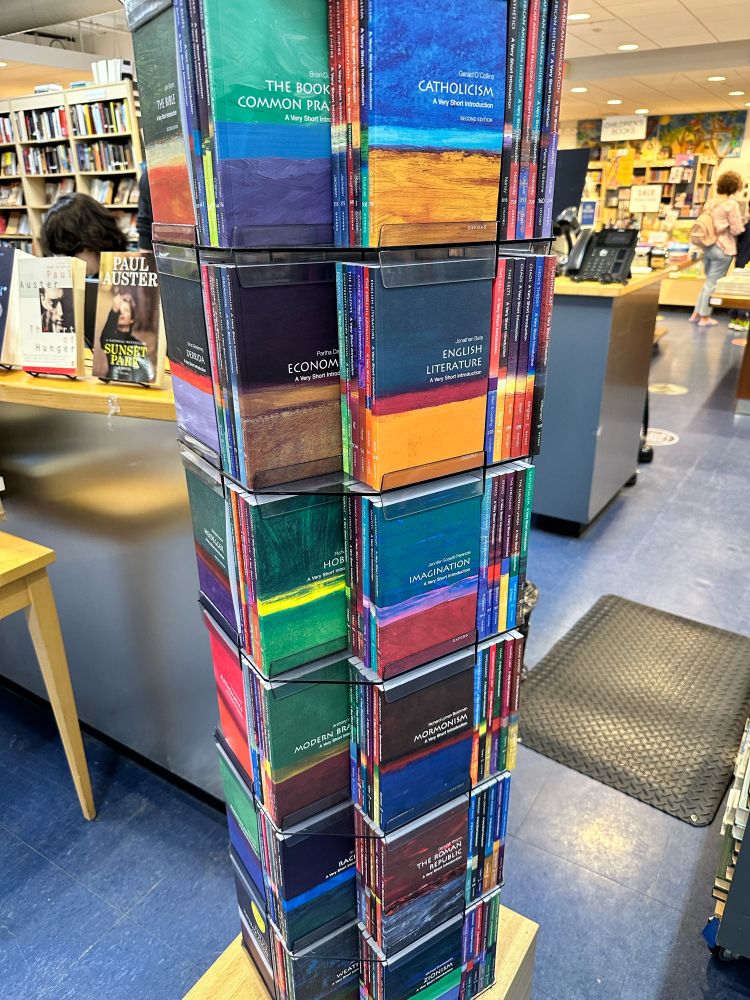
Kieran Healy, meanwhile, spotted an entire tower of Very Short Introductions, the pocket-sized Oxford University Press books currently corrupting Our Youth about whatever.
Turns out both the NYPD and Gerhard Richter have a thing for digital reproduction, fabrication, and scale.
*[Wait, the artist’s website lists a 350cm tall STRIP-TOWER of digital print face-mounted to Perspex as being exhibited at the Serpentine right now. Are there two? Are we pretending there is just one, and that it is not the janky and provisionally mounted wood tower with a labelmaker label on the bottom that was in Basel? Or is that one just inside at the Serpentine? This is the second inaccurate exhibition notation I’ve seen on the artist’s website this year. Richter’s digital reproducing is running ahead of his registrars.]
Gerhard Richter, STRIP-TOWER, 2023 [serpentinegalleries.org]
Previously, related: Gerhard Richter Strip Show
Thinking of Frank Stella on the weekend of his death, I kept coming back to the scramble to get Carl Andre out of Rikers after he’d been arrested for the death of his wife.
One criminal attorney, Gerry Rosen, had met with Andre at Rikers, then headed back into the city to piece together the $250,000 needed to get him out before nightfall. Paula Cooper and another art attorney, Jerry Ordover, who’d also handled Andre’s divorce, scrambled, too. It was Ordover who thought to ask Frank Stella, who had been one of Andre’s oldest and closest friends.
After Rosen brought Andre checks to sign, and sorted through the phone messages his wife had written down for him, he spoke with Cooper, who thanked him and said they were going with another attorney: Ordover. Cooper, Ordover, and Lawrence Wiener drove a certified check from Stella to Rikers, where they spent hours waiting for his release.
Re-reading this incident in Robert Katz’s book, Naked By The Window, I had not realized that this ride back to Manhattan was where Wiener had asked, “Do you know what happened?” and when Andre said no, that was it. Cooper is the last member of Andre’s reverse SWAT team still with us; I hope someone will ask her about it.
I also did not realize that the most substantive offer of help Rosen had received while visiting Andre at Rikers was an immediate offer of $100,000 and a referral to an art lender—from Andrew Crispo.
Previously, related: Speak, Muse
Wiping The Floor
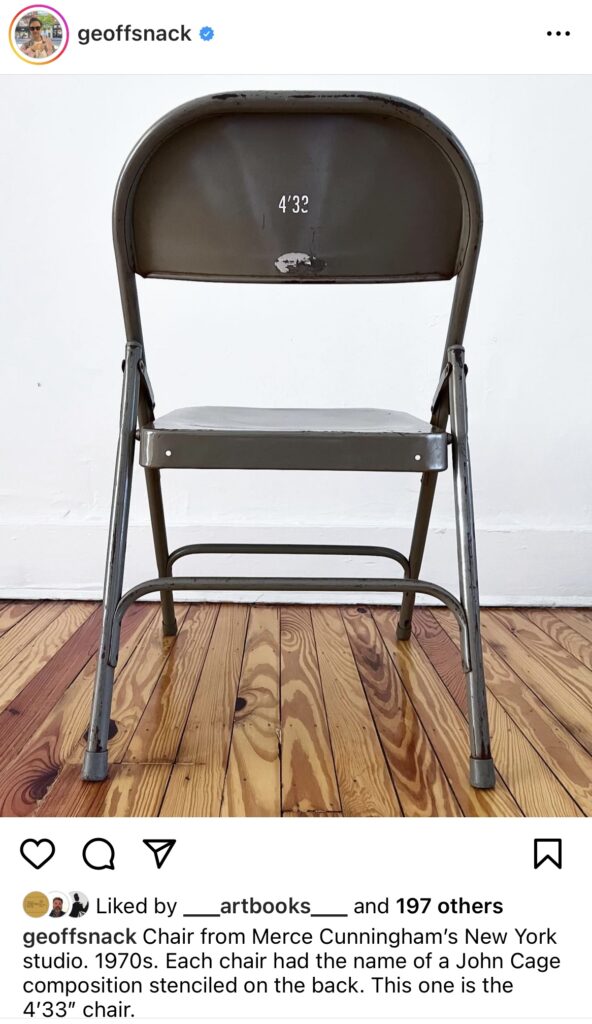
Clearly I need to get on instagram more frequently, because then it might not take Yoshi Hill to point me to Geoff Snack’s 5-day-old post about scoring this 4’33” chair from Merce Cunningham’s studio. On the other hand, it’s nice when someone sees some wack thing like this and is like, you know who’d get a kick out of this, and thinks of you.
Previously, very much related: Scoring John Cage’s Table
I opened Colby Chamberlain’s [non-paywalled dropbox link October essay, “On Collaboration” immediately, but I confess it took me a couple of days to push through the sneaker drop connotations of the title and actually read it. You, though, should not wait.
Colby takes a historic look at Artforum and other art institutions—PS1, mostly, as proxy for a vaguely self-determined “art world”—as places where critique and opposition happen within the institutional context. “Collaboration,” he writes, “is a patchwork process of working with rather than working against, of temporary solutions and improvised repairs.”
Ultimately his essay poses the question of whether Artforum will still be a site of collaboration and critique after the recent editorial and staff upheavals at Artforum over opposition to Israel’s slaughter in Gaza. That his essay is published in a journal formed almost 50 years ago from a previous editorial upheaval at Artforum, is, perhaps, a sign of hope.
Colby Chamberlain, “On Collaboration”, October 187 [tinyurl/dropbox]
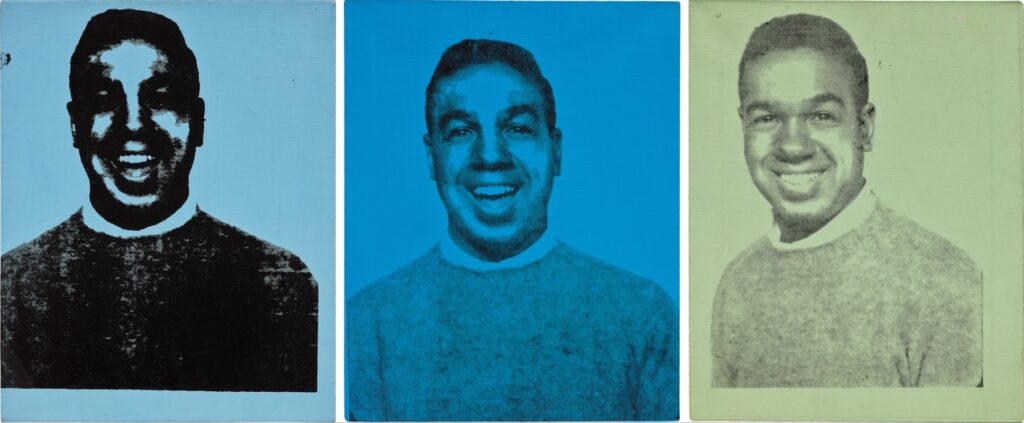
I admit I had no idea, but it’s at least a little reassuring to learn no one was more surprised to discover Andy Warhol made portraits of Bobby Short than Bobby Short himself. It turns out he made at least nine, and they were among the very first photobooth portraits Warhol made, in the Winter of 1963.
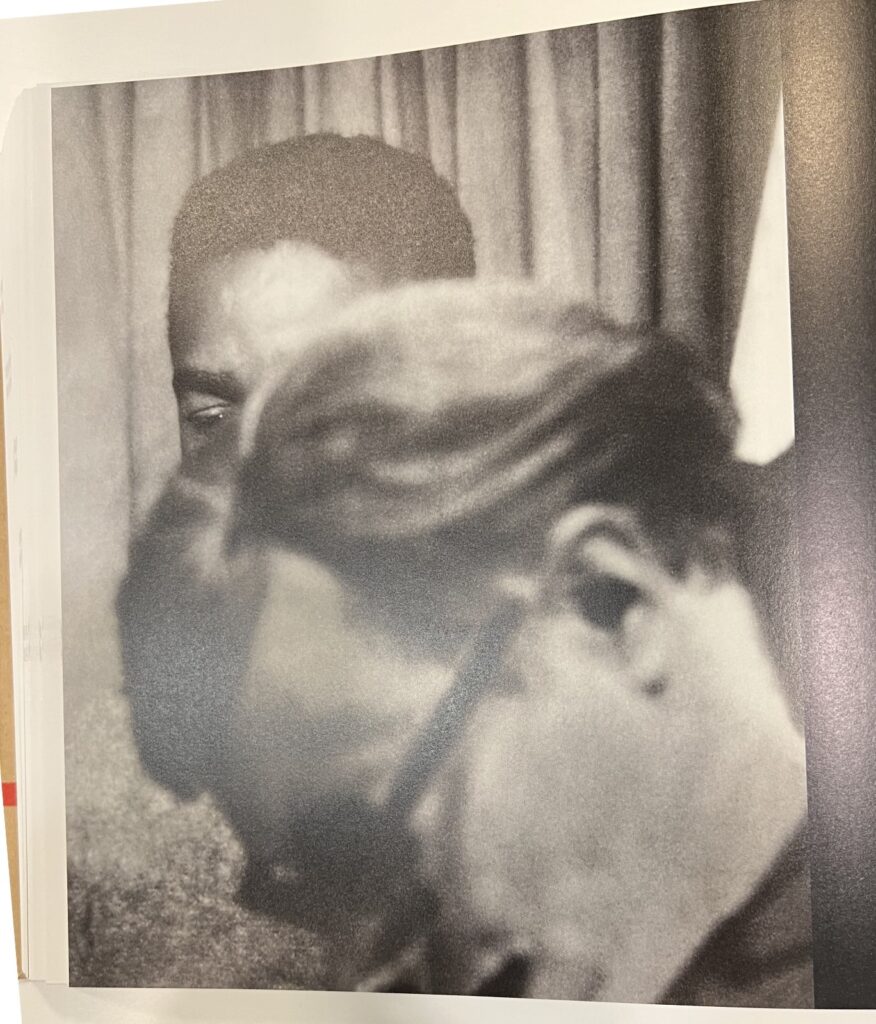
In the catalogue raisonné the cabaret singer recalled going to the photobooth with Warhol—also Warhol drawing his feet—but said they never talked about portraits or a commission. the nine paintings of four images of Short were found in Warhol’s studio after his death.
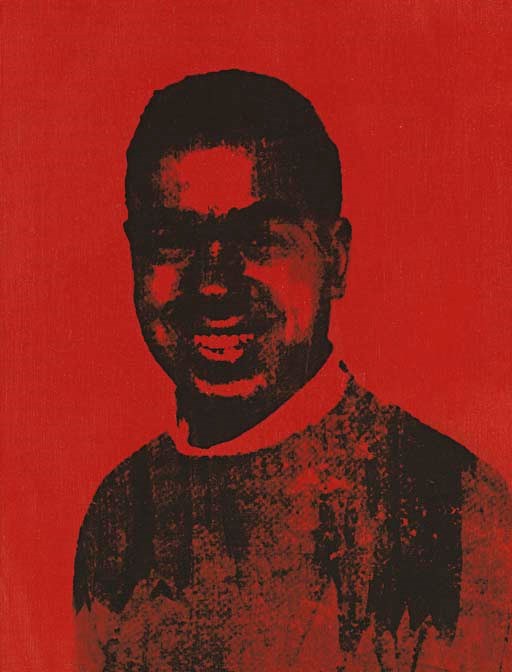
Short apparently didn’t know about the paintings until the CR editors came calling; did he ever get to see them? Short died in March 2005, just weeks before at least three went on public view for the first time, at Shafrazi. Another turned up at Christie’s in 2006. The two known photobooth strips Short made do not include any of the images Warhol used for the paintings.

Warhol made his photobooth portraits in the Summer of 1963, beginning with Ethel Scull 35 Times [later Ethel Scull 36 Times when Warhol threw in another painting.] Short was next, then socialite Judith Green and Warhol himself. In this moment Warhol was also working on his 13 Most Wanted Men mural for the 1964 World’s Fair and on his first films—which would soon include the photobooth- and mugshot-influenced Screen Tests.
There is no Bobby Short Screen Test. Short was a voracious collector of famous friends and an absolutely masterful namedropper, and a longtime family friend, yet we heard boo, and Warhol gets zero mentions in Short’s biographies or papers. Was Warhol a little too downtown for Short’s crowd, or was Short just not a Factory type? Or was their relationship—or maybe it’s better to say their interaction—not the kind of thing one publicized back then? Maybe we should reserve judgment until we see the feet pics.
15 May 2024, Lot 142: Andy Warhol, Three Works: Bobby Short, est. $600-800,000 [phillips]
11 Nov 2015, Lot 330: the same three works not selling at Bukowski’s for EUR600-700,000 [bukowskis]
Previously, Bobby Short-related: The Little Apple; Monkey Bar by Joe Eula
Josh Slater-Williams has an interview for Mubi with a very thoughtful Kevin Macdonald about the implications of making High & Low — John Galliano, a documentary that about the designer’s career, his conviction for his vile anti-semitic outburst in Paris, and his not-uncontroversial return to fashion afterward.
Coming from outside of the fashion industry and its norms is probably Macdonald’s greatest superpower here; he’s able to recognize the self-delusions that haunt the field and its most intense and talented figures, and to put them on view. What I didn’t expect was to hear how Galliano handled his own role in a situation where he ceded all editorial and creative control:
He wanted to achieve various conscious things, but I think also this is part of his therapy, I suppose. It’s part of his trying to figure things out for himself. That was really apparent to me when I went to the Margiela show that we filmed, that begins and ends the film. I realized as we were watching it: my God, this show is about having a documentary made about your life. It’s about his life filtered through film, because he made a fashion show that is a film at the same time.
A Psychological Detective Story: Kevin Macdonald on “High & Low – John Galliano” [mubi]
Previously, related: Margiela Artisanal Cardboard, Rover, Bunny, Beanie